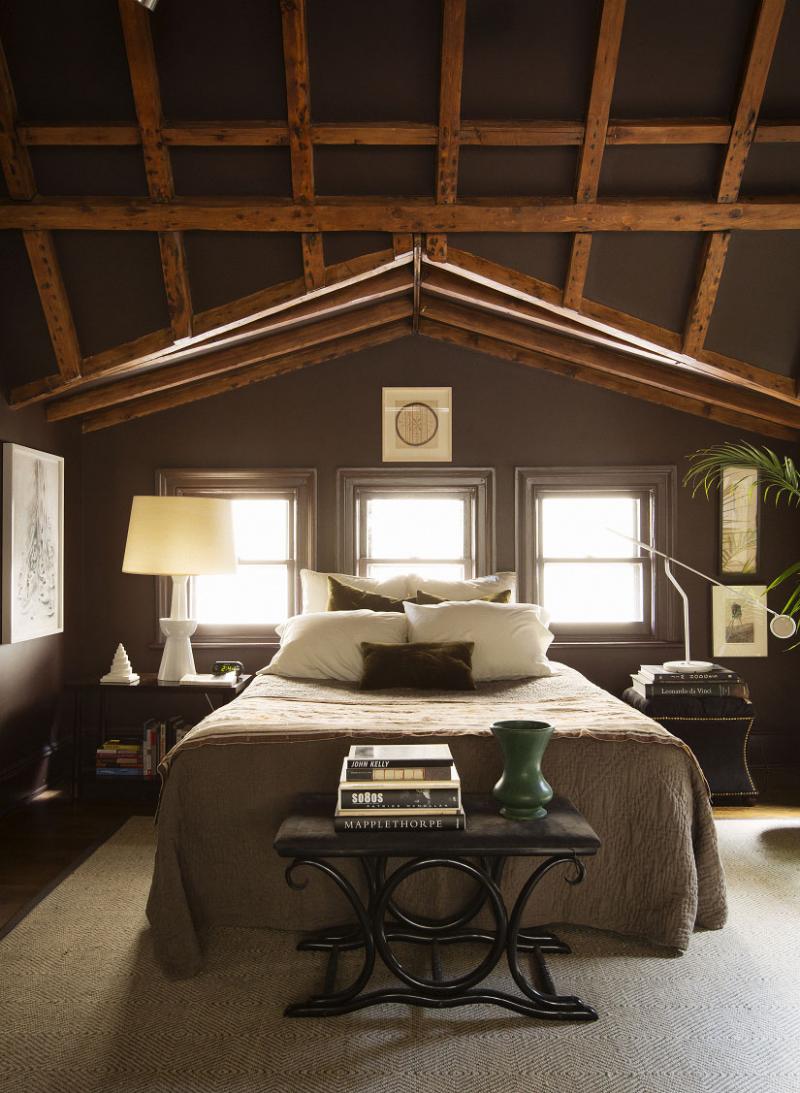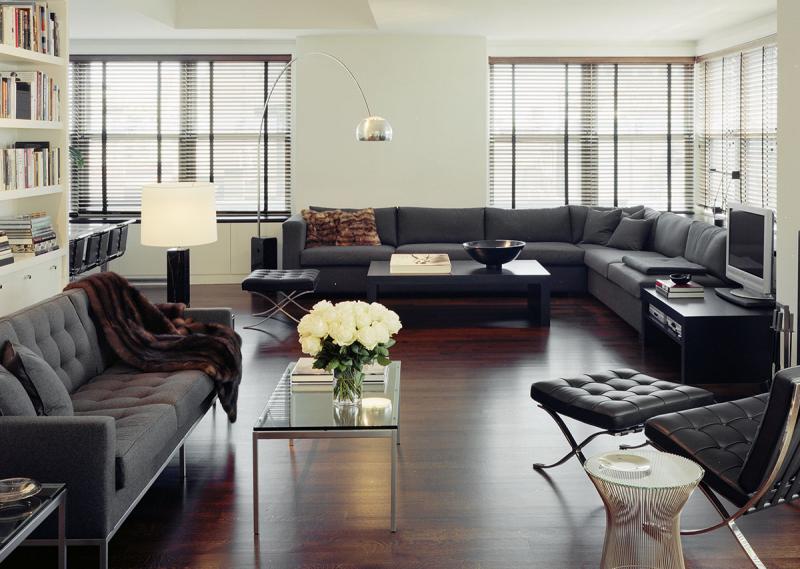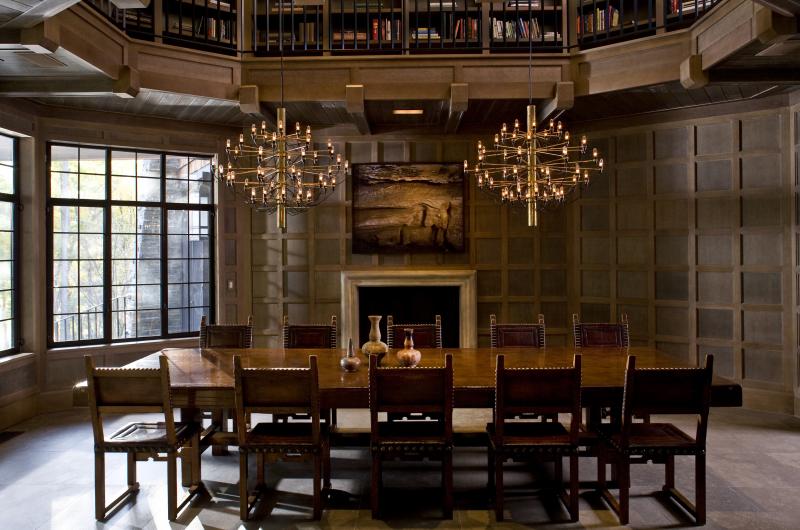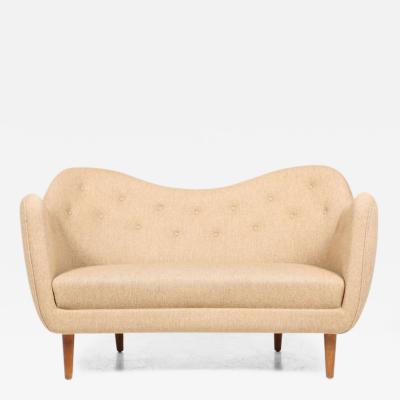The Tastemakers: A Conversation with Interior Designer Glenn Gissler
The New York-based interior designer Glenn Gissler seems to defy classification. Trained as an architect, he derives great joy from knocking down walls and renovating a space to help it achieve its full potential. A voracious collector, his razor-sharp eye makes for interiors that are superbly curated, featuring a mix of art and design from a range of periods and movements. A consummate designer, he excels at creating spaces that are profoundly artful, exceedingly refined, and utterly timeless.
Gissler, who studied fine arts and architecture at the Rhode Island School of Design (RISD), worked for the influential interior designer Juan Montoya and the celebrated architect Rafael Viñoly, before establishing his own firm in 1987. Since then, Gissler has emerged as a unique creative force in the industry—pushing the boundaries of what an interior designer can do and creating spaces that strike an exquisite balance between tradition and innovation.
We caught up with Glenn to discuss his greatest influences, his first project for the fashion designer Michael Kors, and much more.
InCollect: Your academic and professional training is very much rooted in architecture. While you were studying at RISD were you planning on becoming an architect?
Glenn Gissler: I grew up in a suburb of Milwaukee and when I was in eighth grade, which was around 1971, I stood in front of my class—with my long hair and patched jeans—and said that I wanted to be an interior designer. I don’t really know where it came from—at the time I had only known one interior designer in my life. I studied art in high school and had some great teachers, including one who studied painting at Yale with Josef Albers. When I started college, I went to the University of Wisconsin for a couple of years and studied fine art, architecture, interior design, and sociology. I also became very involved in historic preservation at this time. The catch phrase being thrown around a lot was adaptive reuse [the process of reusing an existing building for a purpose other than what it was built for], which I just loved. A teacher told me in order to do what I really wanted to do, I should study architecture. So, I went to Boston and attended the work/study program at the Boston Architectural School. I loved the architecture of Boston and it’s a very exciting city in terms of preservation, but I ended up transferring to RISD. I thought I’d died and gone to heaven. The setting, the faculty, the passionate students—the whole thing was stunning to me. I’m a big advocate for the school—I’m on the board of the museum and I’m a big donor of decorative arts to the museum. I’ve given them over 200 objects. RISD was conceptual, not pragmatic, and I loved that. But while I was there, I always knew that I wanted to do interior design. My formal education was more rigorous in architecture and historic education—I didn't study furniture, textiles, etc. All those things I learned on my own, although my background did bode well for what I wanted to do. It’s in my blood and it remains in my blood—the coalescing of art, architecture, design, lifestyle and experience. When I got out of a school, I became a student of interior design and I still am thirty years later.
InCollect: How has your architecture-driven background influenced your work as an interior designer?
GG: I worked for two summers while I was at RISD. The first summer I worked for a small interior architecture firm that had trained at the Swiss version of the Bauhaus—they were very much Modernists. That was my first experience getting my toes wet in the New York design world. The second summer, I worked for Juan Montoya, who was a leader of the high-tech era. He had a very architectural approach and reconfigured spaces and did so boldly. Immediately after school, I lived in New York and worked for Juan for a couple of years and then I was recruited by Rafael Viñoly who wanted me to help the firm start its interior design department. At the time, Viñoly was kind of unknown and it was a small firm, but I worked on a lot of different projects of varying scales, including the first Prada store in New York and a big adaptive reuse project for the Criminal Justice School in New York. Then, opportunity knocked.
When I came to New York I had a crazy mantra that I would start my own business after five years. When I was four years out of school, I thought I can do this. I became friendly with a new designer named Michael Kors and he asked me to design his first real showroom—a 10,000-square-foot space that occupied an entire floor of a building. The space housed his whole operation—the showroom, which needed to be able to convert into a runway that could accommodate 300 people, the shipping and receiving department, and PR offices. Besides Michael Kors' showroom, some of my first projects were small residential projects—many in postwar buildings that involved knocking down walls and doing the electrical and plumbing. Besides the architectural work, I would select furniture, lighting, and artwork. Nearly thirty years later, I can still say that half of my business comes from renovations and new construction. We’re kind of a boutique, full-service firm—we do architectural details, we talk the talk of architects, lighting designers, plumbers, which is not so normal in the industry. We’ll roll up our sleeve and arm wrestle with an architect about what can be done. Nothing makes me happier than a project where we can rip down walls and start new—it’s about creating a vision.
InCollect: Are there any design movements, periods, etc. that you are particularly fond of or find yourself returning to again and again?
GG: The late-nineteenth through early-twentieth century was a curious period of time in art, architecture, music, and design. It was when modern ideas began to emerge. I enjoy the work of Christopher Dresser, some aspects of Louis Comfort Tiffany, especially the very architectural stuff, Gustav Stickley, Josef Hoffmann and the Vienna Secessionist movement, Frank Furness. They were struggling with the opportunities that the Industrial Revolution offered. It was an innovative time and there was a real struggle and tension between craft and luxury. Dresser worked in the late-nineteenth century and I opened my firm in 1987, basically 100 years later, when there was a lot of struggle between Modernism and Post-Modernism. We were essentially dealing with the same questions in a way. I’m not so interested in blazing new territory as I am integrating the times you live in and times gone by. My work is a mix—a dialogue between things from different periods. It’s not really traditional, but I also don’t get the typical modern approach of pretending that people don't have things—people have things that they like, they have things that don't match, and it’s unrealistic to think that you can banish that from the home—that’s the humanity of a home. So I try to figure out ways to integrate these pieces in an effective way.
InCollect: Who are some of your favorite designers (past and present)?
GG: Palladio. There’s just something so genius about his homes in the countryside. The rooms had no designated function and they were in beautifully laid out, classical buildings. As far as the concept of a multi-use space goes, it’s very modern even though they’re classical in terms of decor. Jean-Michel Frank and Jean Prouve. Frank reinvented French furniture using a classical basis and used fine materials and craftsmanship to redefine luxury. Meanwhile, Prouve used innovative materials and engineering to create pioneering structures that spoke to the time they were made. Also, T.H. Robsjohn-Gibbings, whose work is very much rooted in Classicism. Joe Durso, a leader of the high-tech era who is still alive and still practicing. He’s kind of under the radar, but he influenced a whole generation of people with his sublime, Minimalist spaces that feature only the essential items for living. I admire Stephen Sills' remarkable ability to use Old World antiques and approaches to finishes in masterful ways. Axel Vervoordt also uses remarkable objects, remarkable artwork, and furniture to create beautiful spaces. They’re not decorated—the strength of the objects create the mood, aura, and magic. Donald Judd—I love his house in SoHo and the Chinati Foundation in Marfa, Texas. And Lindsey Adelman—a RISD alum and a remarkable designer and creative spirit.
InCollect: What is your favorite room to design? What about that room appeals to you?
GG: As designers, we isolate the problems and solve them. There isn’t a room that I like to do the most, though I do like to design a room that has a real reason and gets used and serves more than one purpose. I’m interested in getting my clients to use the rooms in the natural course of living, not just when they have company.
InCollect: Your interiors masterfully blend art, antiques and decorative objects from a range of periods and styles. How do you find balance between the old and new, classic and cutting-edge?
GG: So much of it comes down to feeding my intuition and knowing when the balance is right. I use custom upholstery, I purchase vintage and antique case goods, tables, lamps. If I can't find what I'm looking for, I design it. The real joy of the juxtaposition, which I think of as alchemy, comes when you combine things and they are in dialogue—that becomes magical. It’s about pairing the fancy with the unassuming, the rough with the smooth and finding the balance between them.
InCollect: What is your favorite part of working with a client on a project?
GG: It’s all an adventure. People have dreams of how they want their home to be and my job and goal and the favorite part of what I do is to exceed their expectations. I want to create something that exceeds a place that they could ever imagine and enable them to live like that. One of my clients said that she wanted to have the experience that when she came home, she couldn't believe her good fortune. Her husband, who wasn't so involved in the project, would tell her regularly that he thought that they lived in the most beautiful apartment in Manhattan. That's thrilling to me. I also, enjoy creating projects that transcend time. I’m old enough now and have done enough projects that there are some that I’ve done decades ago that I still show and I'm still proud of. As designers, we’re spending people's money, we’re taking control of their homes and their environments—there’s a big responsibility to find value in the experience and that the stuff we use wears well experientially and visually.
InCollect: What is something our readers might not know about you (i.e., a secret hobby, passion or interest)?
GG: I’m a huge Patti Smith groupie. I’m a longtime fan of her singing, poetry, and performance. I saw her for the first time thirty years ago during the tour for Horses. I’ve seen her dozens and dozens and dozens of times. I’ve seen her in rock n roll clubs and at the Met. RISD and Patti Smith—those are my two passions.
InCollect: What are the greatest lessons you have learned over the course of your career? What advice would you give to designers who are just starting out?
GG: I attribute this to Patti Smith and a lot of others, but be true to yourself. You can’t be something or someone that you’re not. It’s simply not sustainable. Also, for those people who have that inkling to open their own business, my advice is to work for the best people in the industry, be very loyal, stay with them as long as you can stand, and leave on good terms. For people who don’t aspire to own their own business, again, work for the best possible people that will hire you, make yourself invaluable, and exceed their expectations. This is true for all industries. And always explore, travel, be relentlessly curious, whether it’s about food, fashion, technology, architecture, people. It goes back to feeding your intuition and developing your eye and spirit, which goes back to being true to yourself.
InCollect: What’s the best compliment you’ve ever received from a client?
GG: I did a house on the water in Westchester for a couple in their late 50s. It wasn’t grandiose, but I checked in with them a few years ago and the husband, who is retired, said, I just love being in my home. In fact, I love it so much that I have a note on my desk to get out sometime! That’s what’s possible when you work with private clients. It’s very personal and you can provide for them things that they didn’t even know they wanted or needed in their lives. It’s about what it gives them in their heart when they're in their home—that they feel nurtured and empowered. You really can’t quantify or measure how that impacts people's lives.







































